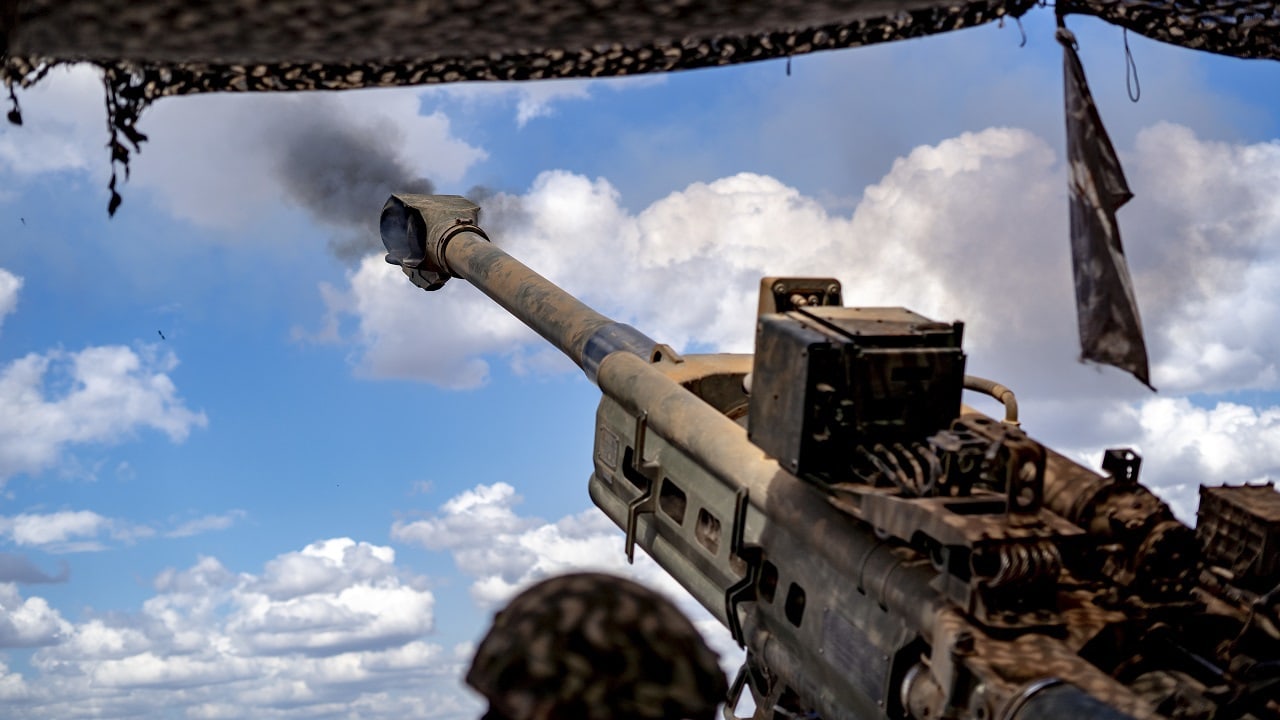Meet the M777
During the Afghanistan War in 2005, US forces debuted the M777 towed artillery piece. At 9,300 pounds, the M777 is considered “lightweight.” Indeed, the M777 is 41 percent lighter than its predecessor, the M198 Howitzer, a “medium-sized” artillery piece that debuted in 1979. The newer, lighter artillery provides Army and Marine Corps troops with a mobile, transportable artillery piece. The M777’s significant weight reduction is owed primarily to its titanium construction.
M777 Lighter and More Transportable
To transport the artillery, U.S. forces hitch the howitzer to a seven-ton truck, which allows for easy movement. For initial deployment, the artillery can be lifted with either an MV-22 Osprey, a CH-53E Super Stallion, a CH-47 Chinook, or a C-130 Hercules..
Despite its lightweight and mobility, the M777 does not sacrifice range or firepower. Delivering a NATO-standard 155mm round within a 25 mile range. The 8-man crew is capable of accurately firing 7 rounds per minute.
The M777 is of British origin. Initially conceived by Vickers Shipbuilding and Engineering’s (VSEL) Armaments Division, BAE bought VSEL and inherited the M777 project. BAE quickly ‘Americanized’ the M777’s production, using about 70 percent U.S.-built parts. The finished product, which has proven popular, has been exported around the world. India purchased 145 M777s, for $750 million USD. The order, completed in late 2016, supplied India with 25 fully-built M777s, while the remaining 120 howitzers were completed in India by Mahindra Defence Systems Limited.
Australia also purchased the M777 – 35 of them. Brazil, Canada, and Saudi Arabia operate the howitzer, too. And, of course, the United States. The U.S. has used the M777 in Iraq, Afghanistan, and against ISIS. Against ISIS, the M777 proved itself particularly useful on cloudy days, when limited visibility prevented aircraft from conducting strike missions.
Artillery Sees Action in Ukraine
Most recently, the artillery has seen action in the Russo-Ukraine War. The U.S. has plans to gift the Ukrainians 90 M777s, most of which have already been delivered. In April, a U.S. Defense Department official explained the rationale behind making M777 deliveries to Ukraine. “We do believe that these howitzers will be … very, very effective in helping [the Ukrainians] in the Donbas fight, which we’ve already seen, is deeply reliant on long-range fires, specifically artillery by both sides.” In May, after Ukrainian forces had begun to deploy the M777, a DOD official assessed the howitzer’s performance. “We do believe that the howitzers … are having an impact, particularly in Kharkiv. Now is that the only reason? I don’t think we would go that far to say that, but we do believe that the systems they’re getting – not just the U.S. systems but the systems from other countries – are absolutely helping them regain some momentum and to take back some territory.”
Ukraine Defense Minister Oleksii Reznikov told U.S. Secretary of Defense Lloyd J. Austin III that Ukraine had deployed 74 M777 artillery pieces to the front lines, where the howitzer was being used to provide long-range, indirect fire. Look for this artillery to remain relevant throughout the duration of the conflict.
Harrison Kass is a Senior Defense Editor at 19FortyFive. An attorney, pilot, guitarist, and minor pro hockey player, he joined the US Air Force as a Pilot Trainee but was medically discharged. Harrison has degrees from Lake Forest College, the University of Oregon, and New York University. He lives in Oregon and regularly listens to Dokken.

